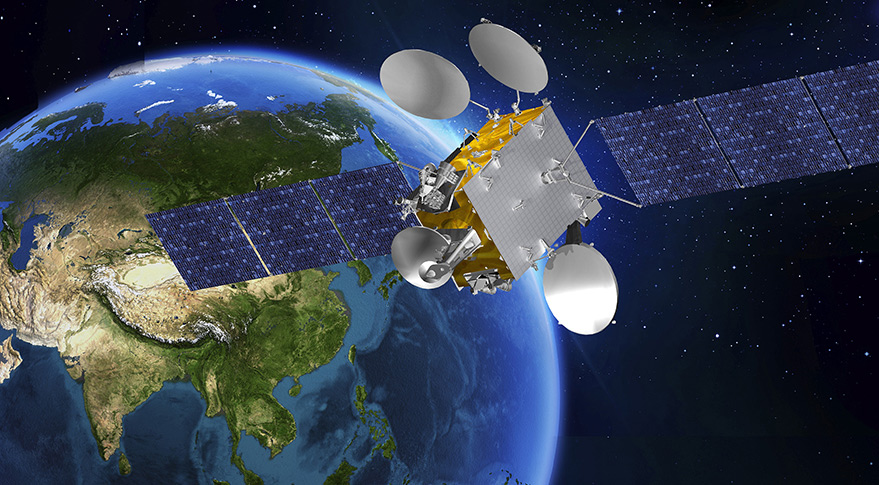
For the first time, Bangladesh has joined the community of nations to have its own communications satellite in geostationary orbit, some 22,300 miles (35,900 km) above the Home Planet, following Friday’s successful launch of Bangabandhu-1 aboard the maiden “Block 5” variant of the Upgraded Falcon 9 booster. Liftoff occurred 4:14pm EDT from historic Pad 39A at the Kennedy Space Center (KSC) in Florida. Although not a homegrown spacecraft—but rather a “turnkey” project, with the satellite and complete ground segment fabricated by the Franco-Italian aerospace firm Thales Alenia Space—Bangabandhu-1 will reside at 119.1 degrees East longitude and bring 40 C-band and Ku-band transponders to bear on a South Asian nation which approaches a half-century since its fragile independence. The satellite is named in honor of Sheikh Mujibur Rahman, Bangladesh’s first president, who earned the populist nickname of “Bangabandhu”, or “Friend of Bengal”.
Today’s mission also marked the first outing of the “Block 5” variant of the Upgraded Falcon 9. Although visibly similar to its predecessors, standing 230 feet (70 meters) tall, the new configuration of the rocket is characterized by an approximately 7-8-percent thrust increase across all of its Merlin 1D+ engines, strengthened landing legs and improved reusability performance and enhanced flight control systems.
WATCH in 4K! Credit: Jeff Seibert / AmericaSpace.com
Contracts to build the 7,700-pound (3,500 kg) satellite were signed between Bangladesh Telecommunication Regulatory Commission (BTRC) and Cannes, France-headquartered Thales Alenia Space in November 2015, with initial plans calling for Bangabandhu-1 to be launched just two years later, in time for the 46th anniversary of the South Asian nation’s December 1971 Victory Day. “The contract for this telecommunications satellite signed with Thales Alenia Space, the key European player in space telecommunication, marks a major turning-point in the history of Bangladesh, not only reducing the digital divide, but also generating business development and creating jobs,” said Golam Razzaque, BTRC project director for the mission until May 2017. “We hope to carry out the launch on the 46th anniversary of our country’s Victory Day, which will be on 16 December 2017.” However, with a backlog of payloads awaiting launch for SpaceX, the satellite—which reportedly cost in the range of 19.51 billion Bangladeshi taka ($248 million)—was delayed until the spring of the following year.
“The timeframe, with a launch by December 2017, is realistic according to the delivery of the satellite on ground and the availability of the launcher on time,” Thales’ Chrystelle Dugimont told AmericaSpace. “Bangabandhu-1 has been delivered on ground in-line with this schedule, but unfortunately, due to delays on launcher manifest and production—in particular, hurricanes over Florida and Texas—the launch has been postponed to April 2018.”
The contract to build the satellite was won “against an international field of competitors”, according to Thales, and it was noted that Bangabandhu-1 would “narrow the digital divide” to bring broadcasting and telecommunications services to rural areas and introduce direct-to-home and other profit-making ventures. When operational, it will function for up to 15 years, providing Ku-band coverage of Bangladesh and its territorial waters of the Bay of Bengal, together with India, Nepal, Bhutan, Sri Lanka, the Philippines and Indonesia, as well as C-band coverage over the whole region. As well as direct-to-home services, Bangabandhu-1 will support disaster preparedness and relief, network restoration, Very Small Aperture Terminals (VSAT), backhaul and trunking.
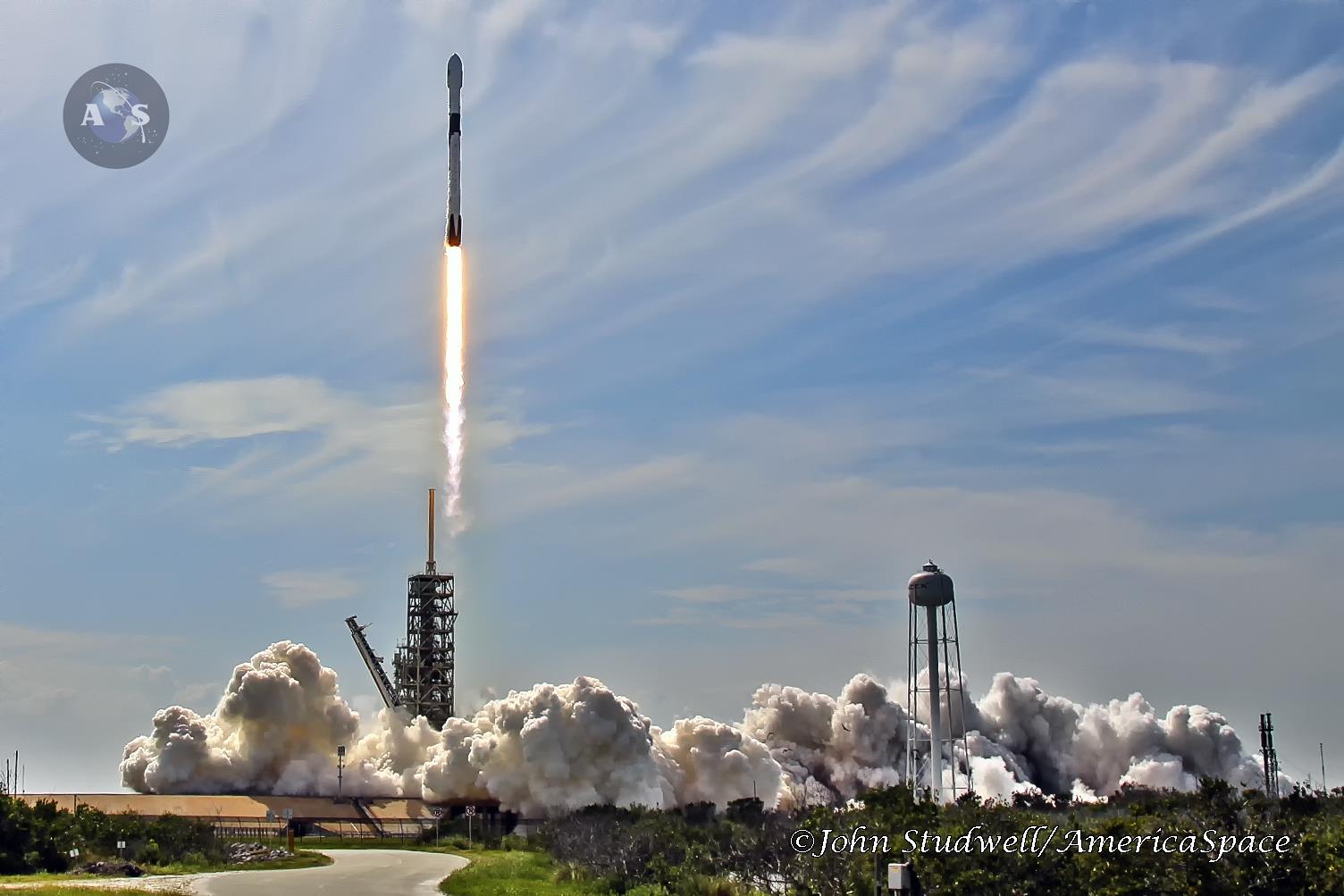
In its role of prime contractor for the mission, Thales took charge of the design, production, testing and delivery of the satellite, together with its ground support facilities. In partnership with BTRC, the firm also led the selection of SpaceX as launch provider. “The launcher has been selected by Thales Alenia Space in co-ordination with BTRC Team, considering the ability of SpaceX to launch Bangabandhu-1 during the target launch period,” Ms. Dugimont told AmericaSpace. “Other launch service providers were considered, but none was able to launch Bangabandhu-1 in the targeted launch period.”
Passing Critical Design Review (CDR) stage at the end of 2016, Bangabandhu-1’s communications module was integrated at Thales’ facility in Toulouse, whilst the service module was finalized in Cannes. Both components were mated together early the following year. Construction and testing of the satellite was concluded last November and the complete payload was shipped from Thales’ facility in Cannes to Florida on 28 March, arriving at the Cape two days later. On the Space Coast, Bangabandhu-1 underwent a week of standalone testing, after which it was fueled and eventually encapsulated within the Upgraded Falcon 9 payload fairing.
The satellite is named in honor of Sheikh Mujibur Rahman, who is today revered as the founding father of the People’s Republic of Bangladesh, as well as serving as its first president and later prime minister, until his assassination by mutinous army units in August 1975. He earned the popular moniker of “Bangabandhu”, which means “Friend of Bengal”. Original plans called for the satellite bearing his name to be launched in December 2017, timed to commemorate the 46th anniversary of the formation of Bangladesh as a new nation.
SpaceX’s new Block 5, although outwardly similar to its predecessors, is characterized by an approximately 7-8-percent thrust increase across all of its Merlin 1D+ engines, strengthened landing legs and improved reusability performance and enhanced flight control systems. “Bangabandhu-1 happened to get manifested on the first Block 5 Falcon 9,” a media representative from Thales Alenia Space told AmericaSpace. “This has resulted in some extra delay. However, Bangabandhu-1 will fly on the most advanced and most reliable vehicle ever built by SpaceX.” Since this particular variant of the Upgraded Falcon 9 will also carry astronauts—aboard the Crew Dragon vehicle, slated to make its unpiloted debut later in 2018—the preparations for each flight of the booster have featured unprecedented thoroughness, as well as close scrutiny from NASA.
As previously reported by AmericaSpace’s Mike Killian, NASA will soon certify the Block 5 for launching human beings on, having awarded SpaceX a multi-billion dollar contract to fly astronauts to and from the ISS in 2014, and has strict requirements SpaceX must meet before certifying Falcon 9 to launch people. Block 5 will meet them all, allowing it to become rated for human spaceflight and ending further development of the Falcon 9 in general.
It’s SpaceX’s last significant update to the Falcon 9, and represents the culmination of years of development, incorporating many changes to allow SpaceX to refurbish and reuse the rockets much faster, and fly more missions with a single booster, all while keeping costs down. But SpaceX has been rather quiet as to what upgrades the Block 5 DOES incorporate, so specific details are hard to come by.
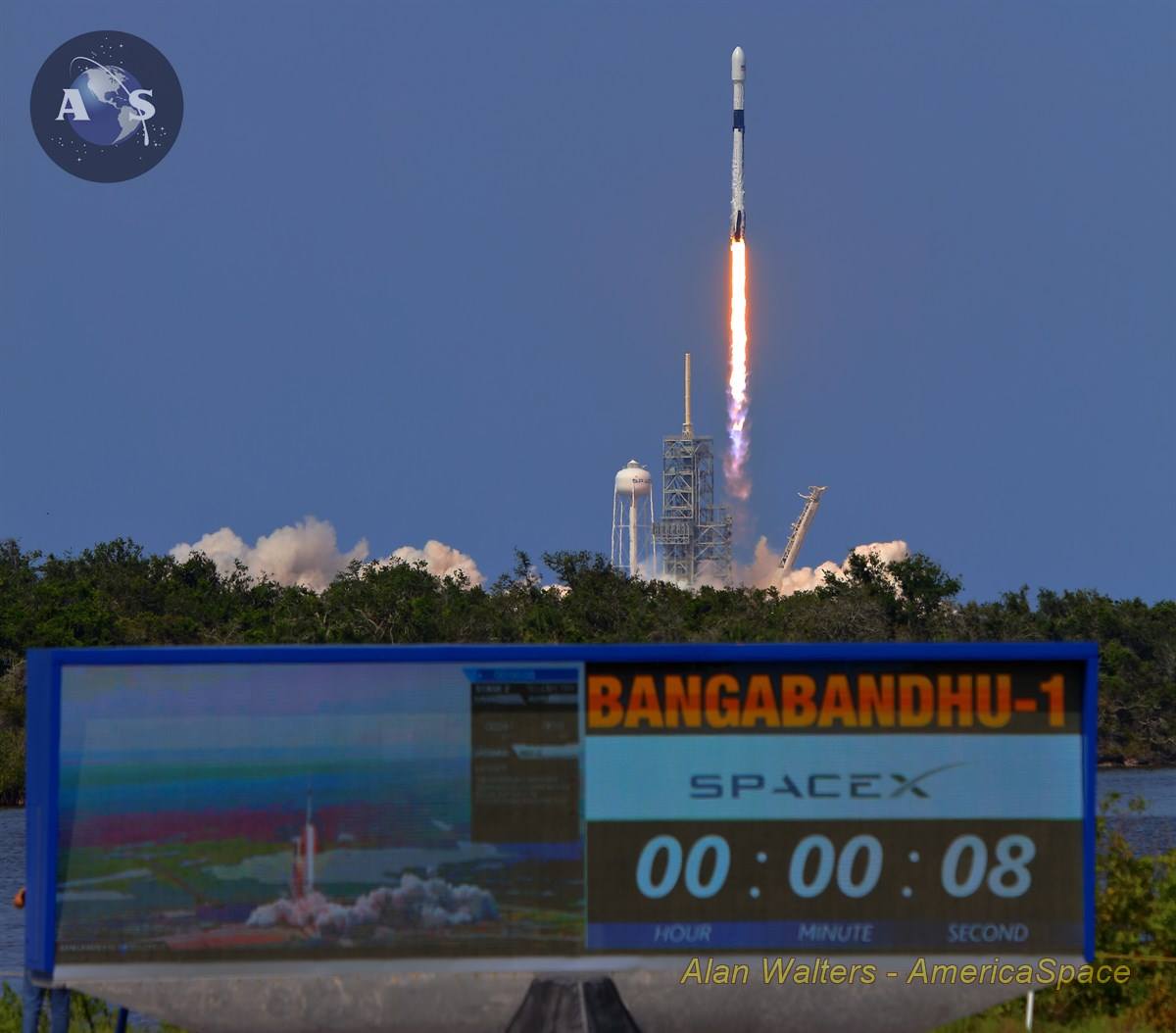
What we do know, is the rocket’s Merlin engines have been redesigned to provide more power and allow for up to a dozen flights per booster before needing refurbishment, aiming for 48-hour turnaround between missions and 100 flights each before retiring. Not only will they improve performance, but reliability and manufacturability as well.
“The key to Block 5 is that it’s designed to do 10 or more flights with no refurbishment between each flight — or at least not scheduled refurbishment between each flight. The only thing that needs to change is you reload propellant and fly again,” said Elon Musk in a media teleconference this week.
“Our goal, just to give you a sense of how reusable we think the design can be, we intend to demonstrate two orbital launches of the same Block 5 vehicle within 24 hours, no later than next year. Toward the end of next year we’ll see the first Block 5 seeing [its] 10th flight. And like I said, next year is when we intend to demonstrate re-flight of the same primary rocket booster within — basically, same day re-flight of the same rocket. I think that’s really a key milestone,” he added.
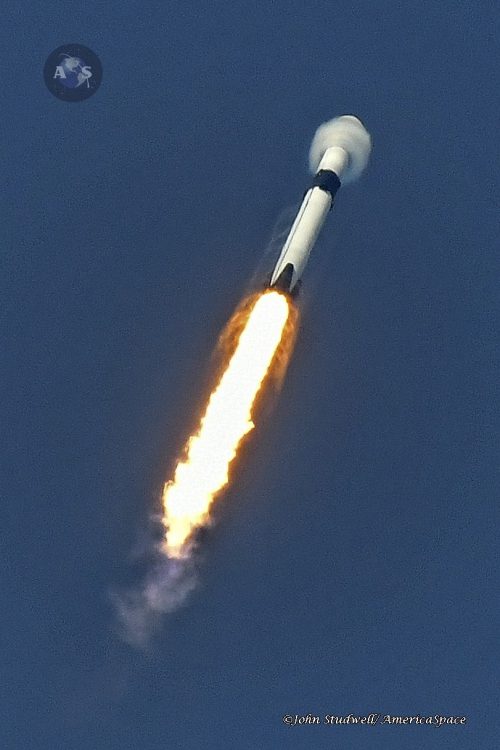
It’s understood too, that one significant change is the elimination of a specific center engine configuration, reducing the number of engine configurations to 2; relight and non-relight. This means the change, combined with the new Merlin Throttle Valve (or MTV), allows any engine to be modified to be a relight or non-relight engine, at least up until integration with the rocket.
“There are probably 100 or so changes on that vehicle,” said SpaceX’s president and chief operating officer, Gwynne Shotwell, early last year. Various components of the rocket have also been redesigned to endure more stress and harsher conditions, which will translate to less refurbishment, more reusability and less time between flights.
“Block 5 is the last big spin on Falcon 9, and it’s largely driven by the upgrade that we needed to make for the commercial crew program, as well as national security space launch requirements,” she added.
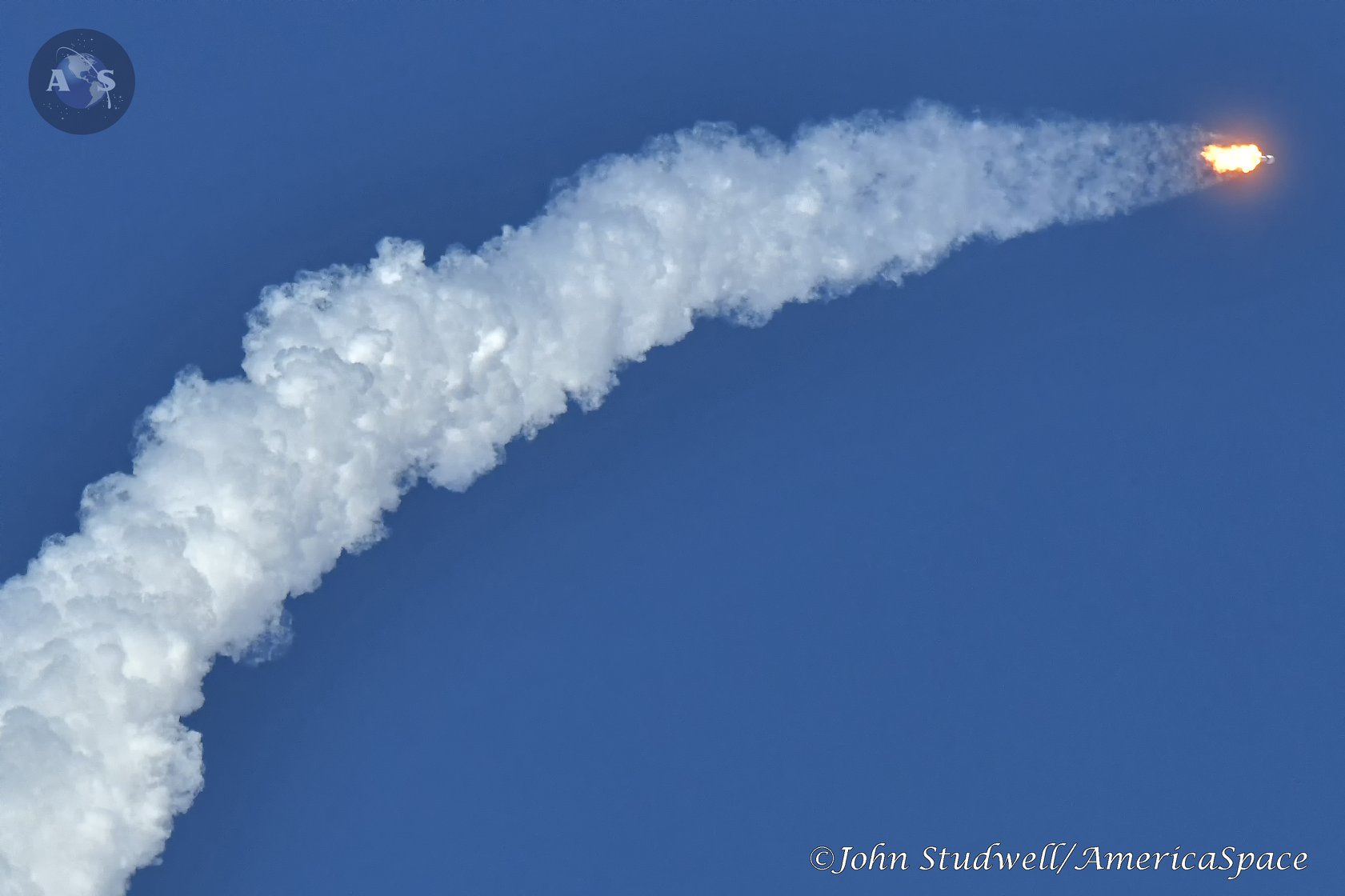
As for today’s successful launch, the Block 5 appeared to have performed as expected, if not better. Liftoff from 39A was followed minutes later by a successful landing of the first stage rocket on an offshore Autonomous Drone Ship (ASDS), marking the 25th landing overall for SpaceX and 14th ASDS landing.
Current plans are that the satellite should enter operational service later in 2018. BDNews24 reported last year that Bangabandhu-1 should enter operational service about six months after reaching orbit and is expected to save the Bangladeshi government around $14 million per month in rent payable to foreign satellite service providers.
FOLLOW AmericaSpace on Facebook!
.




